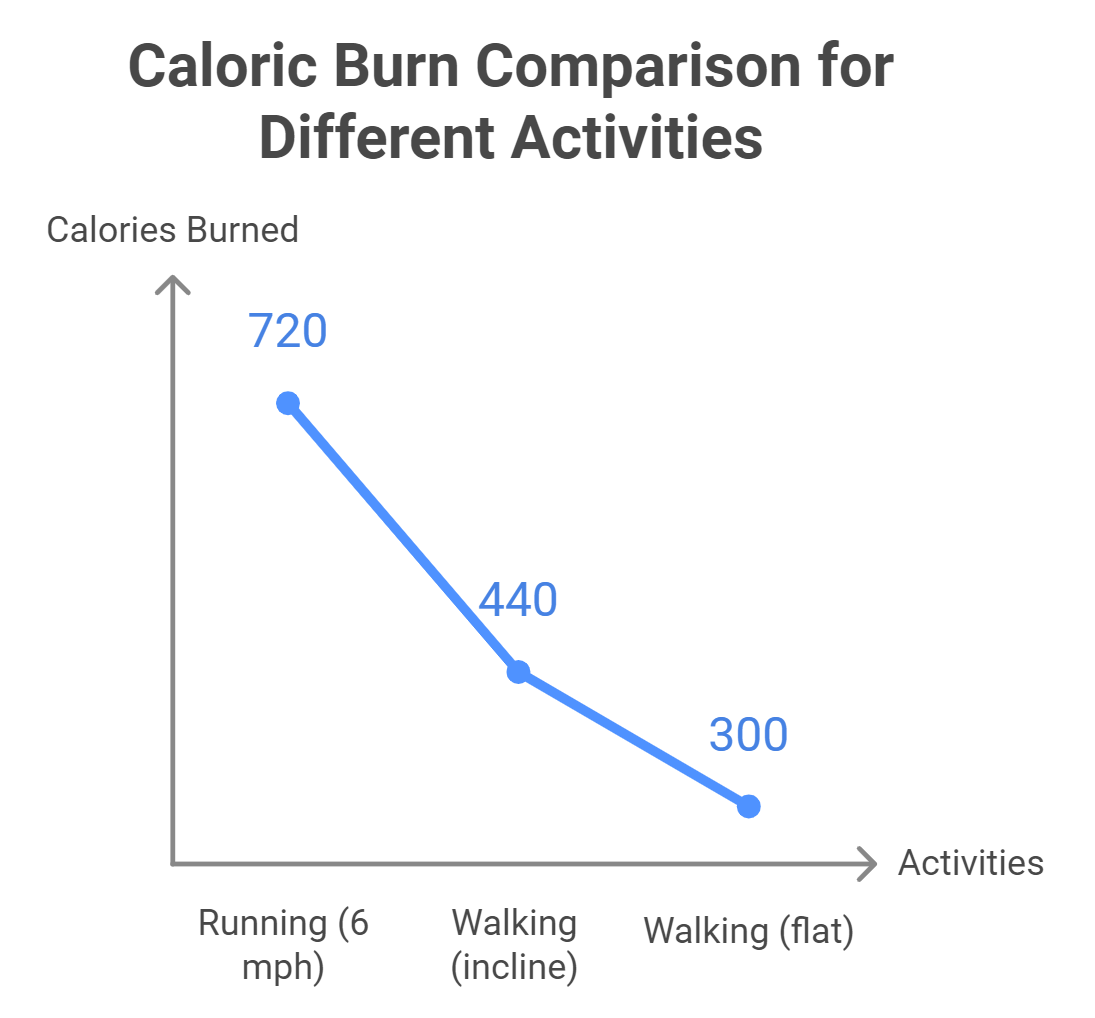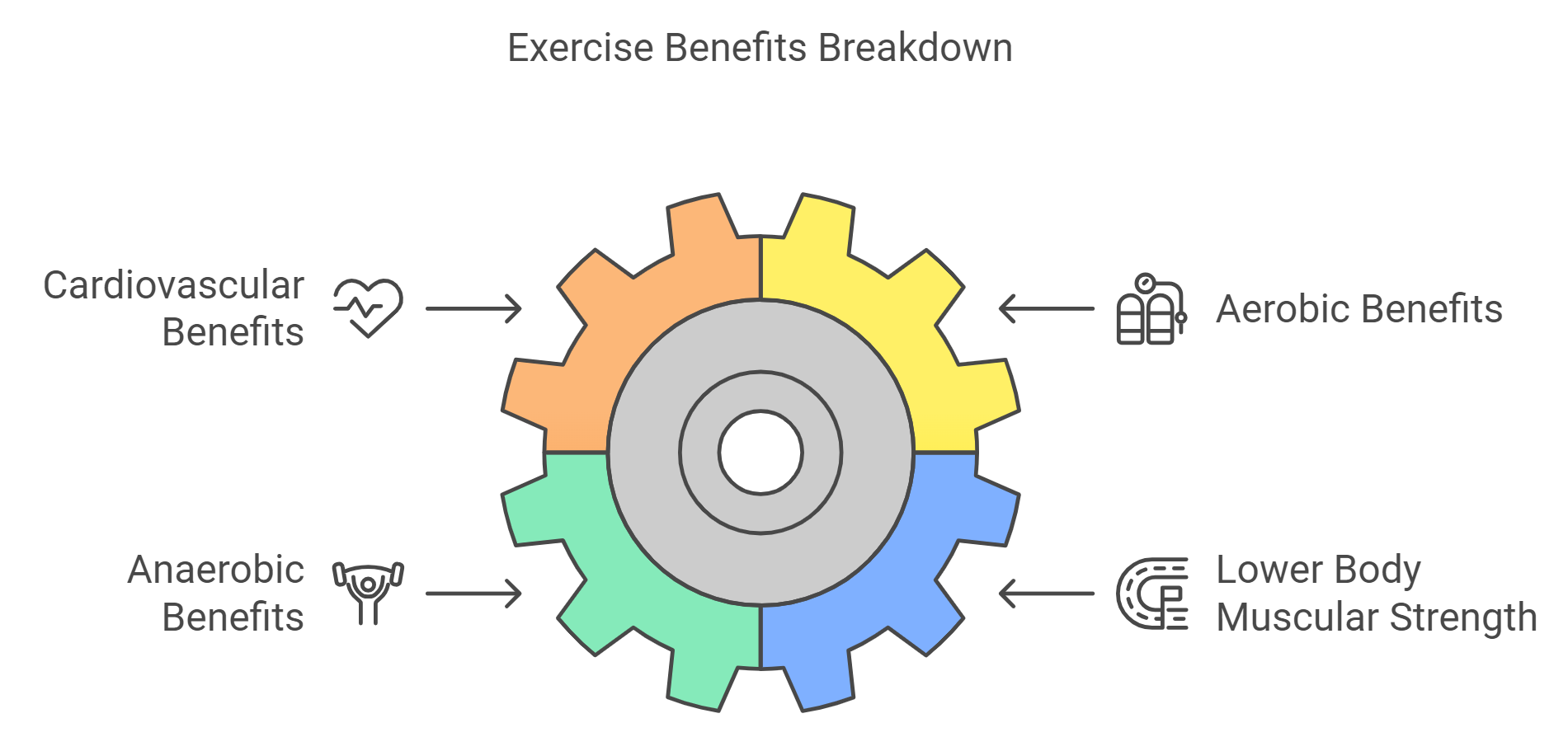Introduction
Have you ever wanted to know the tips for incline walking or running? Each one of the exercises has its benefits, and to choose one of them as good would be judged on several subjective methods, including one’s goals. Now, let us continue to see the facts where you can now decide better.
Comparative Caloric Burn
Those activities are compared, and most of the time, jogging comes on top of them in terms of burning calories. By running for an hour at a 6 mph speed, a 160 pound can burn approximately 720 calories compared to 440 calories that the same individual can burn by walking on an incline.
So as to say, incline walking, as noted above, burns far many calories than that said on a flat surface.

Weight Loss Efficiency
Thus, from the point of view of weight loss, both exercises can be equally useful. Running helps you to lose more calories in a shorter time than jogging and therefore is preferred in cases where you need to shave off a number of pounds.
Incline walking is a perfect recommendation for those who love mild exercises but nevertheless would like to lose weight.
Studies and Data
It is important, however, to note that incline walking increases heart rates to levels almost equivalent to jogging, a sign of high caloric expenditure compared to flat walking.
Incline walking hence can be recommended to all those people who would wish to engage in cardiovascular exercises without necessarily running.
Cardiovascular Benefits
Therefore, pulse rates and cardiovascular coordinate can be termed as tantamount. Like running, incline walking increases your level of cardiovascular fitness because of the elevated level of your heart rate.
Thus, the greater the gradient, the increased effort of the heart and, therefore, the improved aerobic fitness.
Aerobic vs Anaerobic Benefits
Thus, running contributes to both aerobic and anaerobic training, the results of which are better endurance and muscle strength. Therefore, even though incline walking almost exclusively involves aerobic effects, it does also provide better tone to the lower body muscles—as going up the incline is heavy-going.
Incline walking leads to a development of lower body muscular strength as a result of the emphasis that it places on muscle groups that go into working in synergy with the uphill stride. Running, on the other hand, trains the body generally at a relatively lesser degree of emphasis on muscle subgroups compared to incline walking.

Comparative Analysis
Both activities have a positive effect on muscular strength, but incline walking is more goal-specific in terms of strength for quads and glutes. Running has a more balanced conditioning effect on the body.
Mental Health
Exercise is a well-publicized mood elevator. Both incline walking and running engage the release of endorphins that assist in stress reduction and mental ability.
Stress and Anxiety Reduction
Regularly engaging in either incline walking or running can significantly reduce stress and anxiety levels and the Long-term Cardiovascular Health. Both incline walking and running contribute to long-term heart health. Regularly engaging in either activity can lower blood pressure, improve cholesterol levels, and reduce the risk of heart disease.
Joint Impact and Injury Prevention
-
Impact on Joints
Running then is more stressing to joints as compared to walking on an incline. Increased impact may result in pains in the joints or even joints-related injuries if one regularly goes for a run or has underlying conditions.
-
Injuries Risk
Running has a greater potential for shin splints, knee pain, and stress fractures. Incline walking, on the other hand, has less impact on the joints, so it’s a much safer way to walk for anyone who experiences easy injuries.

Rehabilitation and Recovery
It is often recommended for physical rehabilitation because of its low impact. This is a great way to keep moving while in recovery from injury or surgery by providing cardiovascular benefits without stressing the joints.
Engagement and Development of Muscles
Incline walking or running target entirely different sets of muscles. Running, in general, mainly utilizes the hamstrings, calves, and glutes. Incline walking leverages a much stronger workout of the quads, glutes, including lower back muscles.
- More calories burned
- Develops cardiovascular fitness quickly
- Increases overall endurance
Cons of Running
- More impact on the body’s joints
- More prone to injury
Walking on an incline and running have their plus points. Your choice should depend on your fitness goals, health of your joints, and personal preference.
Accessibility and Convenience
For walking on an incline, one requires just a treadmill with an option for the ground to be raised, or real slopes. With running, there is little that can go wrong. Nevertheless, it is more advisable to take the latter, depending on the environment and considering the availability of the corresponding equipment.
Time and Efficiency
It, therefore, takes relative short time if the intention was to burn calories by jogging or running. While it is slow, incline walking can still be incorporated into longer workouts or it can be done with more sets and repetitions.
Personal Preferences
Lastly, the best exercise, therefore, is the one that you can have fun in doing and something that you can practice regularly. Some people love to run, while others enjoy the stability and significant challenge of walking uphill.
Pros and Cons Summary
Pros of Incline Walking
- Minimal impact or pressure applied to joints.
- Increase in lower body muscles
- Can be done as part of rehabilitation
Cons of Incline Walking
- It is with an incline that will be needed to run an experiment.
- The energy spent is less than if the equivalent distance were to be covered.
pros of Running
- Burns lots of calories.
- Boosts mental health by cleaning stress and increasing mood.
- Builds muscles and bones.
- Time-efficient workout.
Cons of Running
- The impact is very hard on the joints, may lead to pain or injury.
- Overuse injuries are possible.
- Requires correct form and proper shoes to protect against injuries.
- Not suitable for people with some health conditions or joint problems.
FAQs
Is it usually easier to burn more calories when running compared to walking uphill for weight loss?
- It is usually easier to burn more calories when using the running exercise than when one goes by walking uphill when targeting weight loss.
whether incline walking is actually a replica of running in relation to cardiovascular fitness?
- Yes, in relation, incline walking can speed up your pulse just as when you are jogging, and thus it provides improvement on the general cardiovascular system.
How about incline walking compared to running regarding mental health?
- There it should be noted that both have a kind of influence on the production of endorphins, and it leads to a reduction of stress and an increase of mood. Choose the one that you like the most for a consequence of the mental health’s stability.
Which of the two exercising routines can be executed within a shorter time, especially considering the busy schedules in society?
- Running is much more time efficient when one wants to lose weight or build fitness, as it will burn more calories and build fitness at a faster rate compared to incline walking.
Conclusion:
This format ensures an inclusive, engaging, and helpful blog that discusses incline walking and compares it to running—all the while using the EEAT concept with concepts of non-pharmacological pain management.


